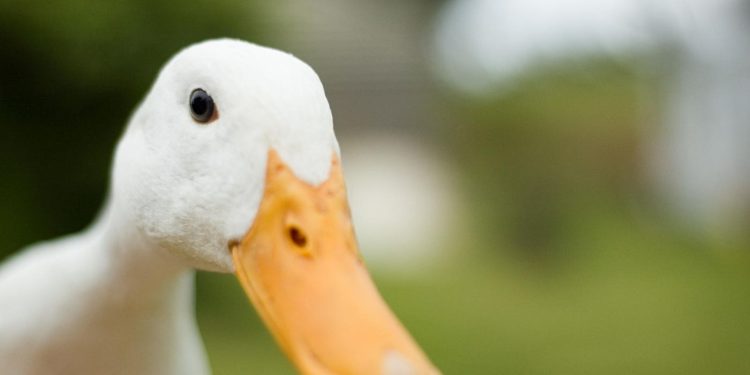The first epidemic of H5N9 avian influenza virus in the United States was identified on a duck farm … (+)
A bird in hand can be worth two in the bush. But two stumps of foreign bird flu would certainly be worse than one. The United States has not been able to control the spread of the H5N1 bird flu. And now, for the first time, there has been an epidemic reported in the United States of another strain of avian flu, H5N9.
This H5N9 epidemic occurred on a duck farm in Merced, California, and was reported to the World Organization for Animal Health. The epidemic led to nearly 119,000 birds that perish on December 2, although it is not clear how many of these birds died of infections in relation to the reduction to prevent the additional propagation of H5N9.
Which makes H5N9 different from H5N1
When you scroll new social media and only half of the attention, it can be easy to confuse H5N9 for H5N1, because the only difference in their name is the number of N. But these are two different lines that in turn have their own sets of different clades and subclades under them. In other words, there are many different H5N1 viruses and many different H5N9 viruses.
In this case, H means hemagglutinin, a protein found on the surface of type A viruses of flu A which helps to bring the virus into the cells which it infects and can come in 18 different subtypes: H1 to H18 . N means neuraminidase, a different protein that helps the virus get out of cells and can come in 11 different subtypes: N1 to N11.
This H5N1 strain spreads even longer than the H5N9 strain
Having to worry now of two different stumps of highly pathogenic avian flu is not exactly two tickets to paradise. But could they be two possible tickets for a pandemic? Well, the H5N1 strain has been spread among birds for several years and has recently appeared in other animals such as cattle, cats, pigs and, yes, humans, as I described in Forbes. At least 67 humans have been tested positive for the H5N1 strain to date with a person in dying Louisiana, as reported by the Department of Public Health of Louisiana.
The new positive is that there has not yet been clear evidence of these 67 people who catch the virus of another human. But the more this strain continues to spread, the more H5N1’s concern could possibly acquire the ability to spread among humans, which would in turn increase the possibility of the word “P”.
A pandemic is when a new pathogen – which means the one who has not really infected humans before – spreads simultaneously in humans in different countries, as I explained in Forbes. New pathogens can wreak havoc because your immune system can eventually shoot in random directions, trying all kinds of defenses that will not work and, in fact, could cause more self -harm. This is what happened during the H1N1 flu pandemic of 1918 and the Pandemic COVID-19.
Mutations and restockings could change the pandemic potential of H5N9
So far, the H5N9 strain has not appeared to spread almost to the H5N1 strain. Consequently, at the moment, the H5N9 does not seem to be a threat as great “P” as the H5N1. Keep in mind, however, that the stumps of flu is a bit like celebrity weddings. You never know what can happen and what is going on behind the scenes. You never know when a series of genetic mutations or reassures in the virus could considerably change what it can do. The restocking is when two or more stumps of influenza virus infect a single host, then exchange segments of their genetic material between them.
The more the birds are infected with H5N1 or N5N9 viruses, the more likely it is that different mutations and reassortments occur. The chances of such fortuitous events increase even more when other animals are infected like pigs, where reassortments tend to be even more likely. This is why it is important to control the spread of these viruses among birds. And why the failure of the United States to do more on the bird flu could eventually endanger with and without wings.


